The Carmel River at de Dampierre Park, a family-friendly swim spot in Marie Butcher’s Carmel Valley Village neighborhood, has been alarmingly dry since mid-July. “There’s lots of life in the river,” Butcher says, “but not right now.”
Last week, Paola Berthoin worriedly watched a heron forage in a stagnant pool by the Sambosa Buddhist Temple and noted trees growing in the dry riverbank. “It’s extremely sad,” she says. “That’s not what a river should be.”
Both women are working to raise awareness about the Carmel River – the Monterey Peninsula’s water-supply bloodline, and the focus of its turbulent water politics – in the midst of a drought.
Kevan Urquhart, senior fisheries biologist for the Monterey Peninsula Water Management District, says 2013 marks the area’s second critically dry water year in a row, the definition of a drought. The river hasn’t run this low since 2007, he says, and it’ll drop even lower if the district runs out of water to release from the Los Padres Reservoir.
Frank Emerson, rescue coordinator for the Carmel River Steelhead Association, says the sluggish flow has forced the river’s threatened trout to spawn in the lower river, making them more vulnerable to stranding. “The population’s not recovered,” he says, “not by a long shot.”
Under an agreement with California American Water and the state Department of Fish and Wildlife, the water district manages the controlled releases that now account for 80 percent of the flow downstream of Carmel Valley Village.
Less than 1 cubic foot – equal to a basketball not quite full of water – is currently flowing into the reservoir from Los Padres National Forest per second, Urquhart says. The district prefers a flow of at least 6 cubic feet per second at the Sleepy Hollow Reservoir; it’s currently at 3.8. But even maintaining that trickle through November could be problematic, he says. The reservoir’s now at 1,018 feet above sea level, and draining it below 996 could harm the river’s water quality and clog the dam’s lowest outlet.
“You have to take some risks to keep the river flowing,” he says.
The drying upstream from Mid-Valley is not related to Cal Am operations, he adds, but rather to the weather and private well pumping. Still, Cal Am’s role in the river’s health looms large, especially as the company pursues a $400-million desalination project under a state mandate to stop overpumping the Carmel. (Cal Am is also required to give the water district more than $1 million a year to keep the steelhead on life support.)
Cal Am General Manager Eric Sabolsice says the company’s currently sourcing about 60 percent of its local water from the Carmel River. It doesn’t help that the river’s driest season coincides with the highest irrigation demand.
Berthoin and Butcher hope Monterey Peninsula residents will make that connection, and consider the fish and the frogs before turning on their sprinklers.
“The health of the river and the health of our community,” Butcher says, “are directly related.”
See the Public Citizen column for info on the weekend’s Carmel River activities. Check back with the Weekly’s Calendar for info on the Sept. 29 World Rivers Day cleanup and Oct. 13 Carmel River Festival and Feast.
---------------------------------------------------------------------------------------------------
The following photos were taken by Paola Berthoin, September 17, 2013, at the Los Padres Dam. The grey section around the dam represents approximately forty feet of drop from the high water line when the dam is full.

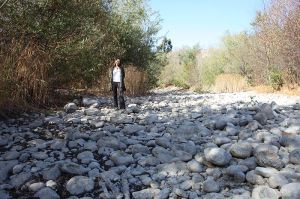
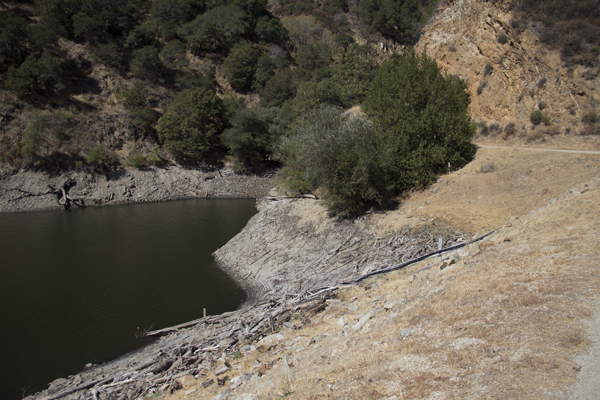
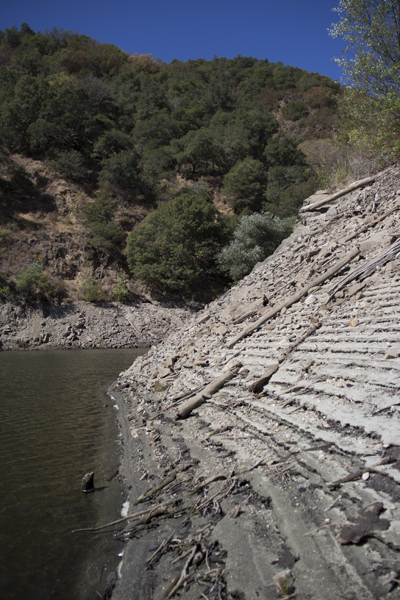
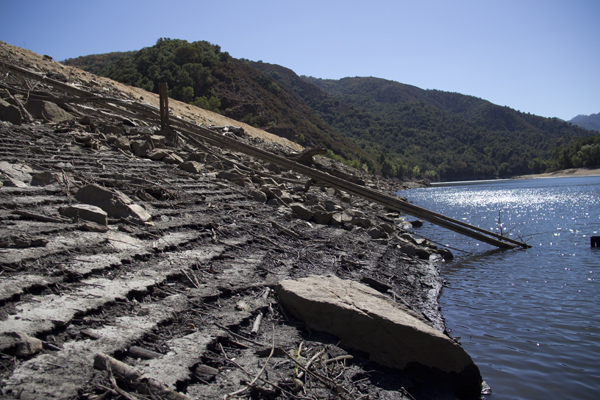
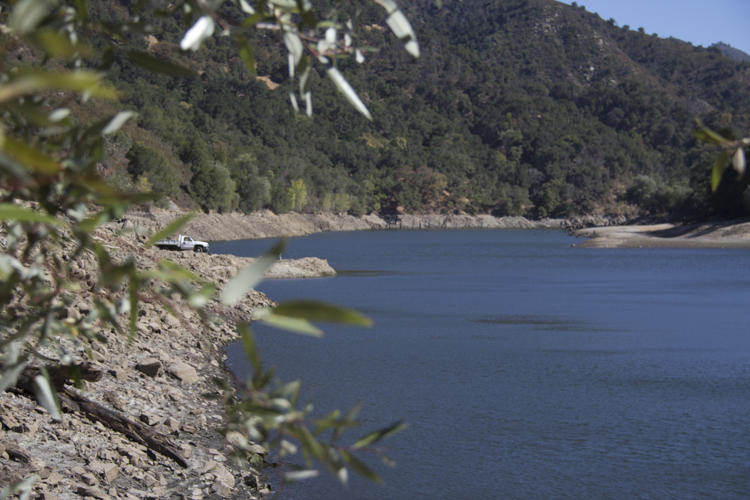
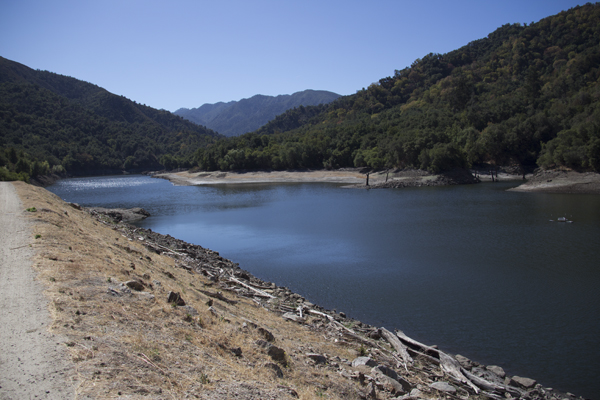
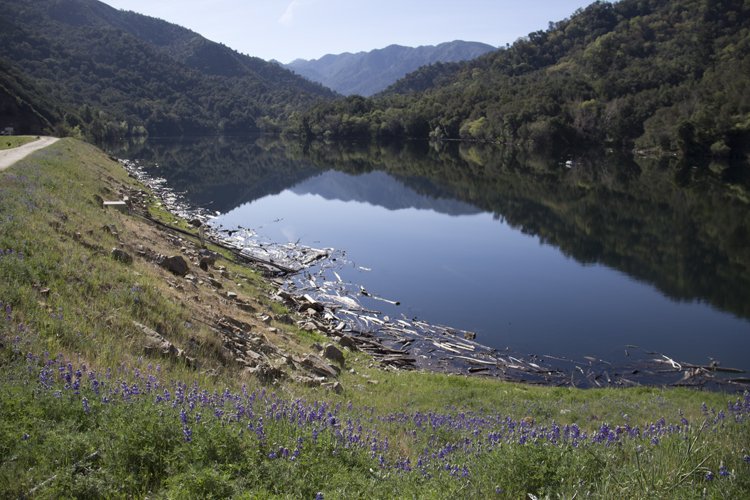
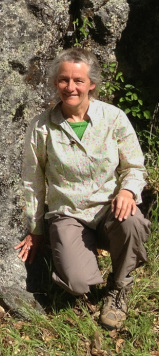
 RSS Feed
RSS Feed
